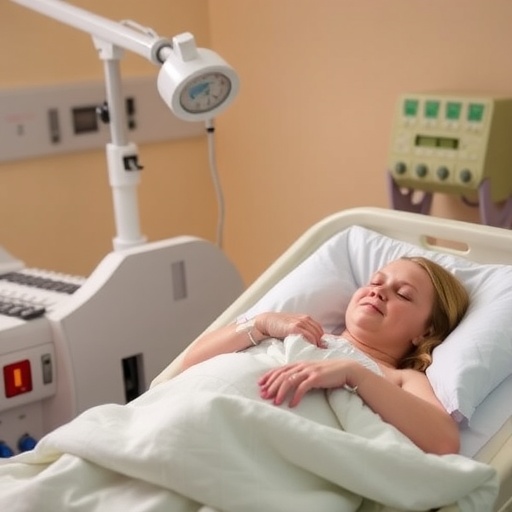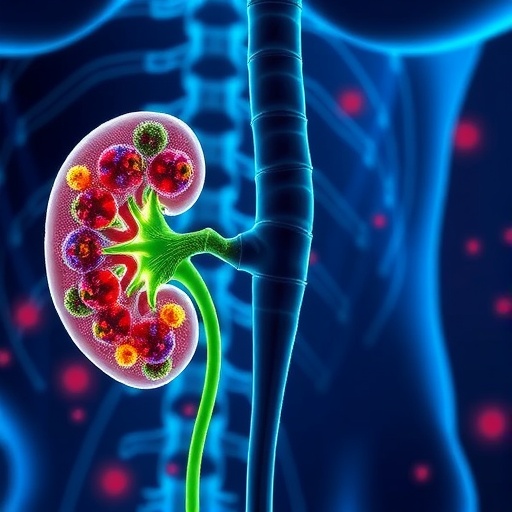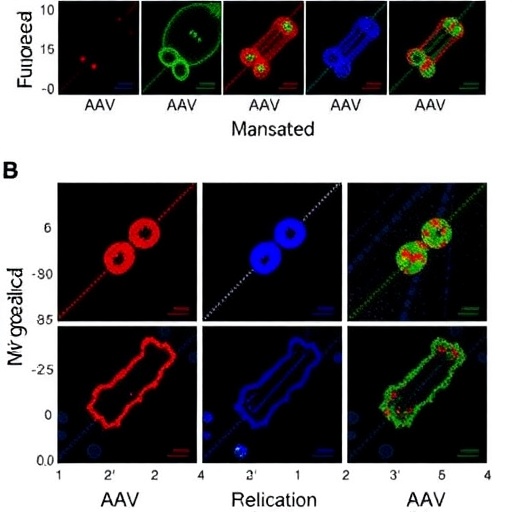In recent years, the management of hyperbilirubinemia in neonates has become a topic of great interest, especially as clinicians strive to implement more effective strategies for monitoring and treating jaundice. One pivotal study conducted by Maneesilasan and Pomrop investigates the role of pre-discharge delta total bilirubin as a predictive measure in determining the necessity for post-discharge phototherapy in healthy neonates born at 35 weeks gestation or later. This groundbreaking research offers new insights that could transform clinical practices and enhance infant healthcare outcomes.
Hyperbilirubinemia is a common condition in newborns, particularly among those delivered prematurely or who have specific underlying health conditions. Elevated bilirubin levels occur when the liver, which processes bilirubin to be expelled from the body, is still maturing. In most cases, this condition resolves without intervention, but in some instances, phototherapy—a treatment involving exposure to specific wavelengths of light—becomes necessary to prevent severe complications like kernicterus.
The study conducted by Maneesilasan and Pomrop aims to address a critical question: how can healthcare providers more accurately predict whether a neonate requires phototherapy after discharge from the hospital? The researchers focused on the application of pre-discharge delta total bilirubin, which refers to the change in bilirubin levels from one measurement to the next before a neonate is discharged. By utilizing this metric, the authors hypothesized that they could create a reliable indicator for post-discharge treatment needs.
The research involved a comprehensive analysis of a cohort of healthy neonates, all born at a minimum gestational age of 35 weeks. Initially, the researchers collected baseline bilirubin levels and undertook follow-up measurements prior to discharge. By comparing these values, they calculated the delta bilirubin and explored its correlation with the necessity of subsequent phototherapy sessions. Throughout the study, the emphasis was placed on ensuring that only neonates without any significant comorbidity were included, providing a clear picture of healthy infant outcomes.
One of the key findings of the study was that higher delta total bilirubin levels were consistently associated with a greater need for post-discharge phototherapy. This observation illuminated the potential of delta bilirubin as a valuable predictive tool for clinicians attempting to gauge the ongoing risk factors linked to hyperbilirubinemia. Instead of relying solely on static bilirubin thresholds, the incorporation of delta values into clinical evaluations can offer a more nuanced and dynamic understanding of a neonate’s health status before leaving the hospital.
Maneesilasan and Pomrop also emphasized the need for continuous education and training for healthcare providers regarding jaundice management. In particular, understanding how delta total bilirubin values can inform treatment decisions may empower clinicians to tailor their interventions more effectively. This is especially crucial in regions where healthcare access is limited, and the judicious use of resources can directly influence patient outcomes.
Moreover, the study serves as an impetus for further exploration into additional predictive factors that could be incorporated into broader clinical assessments. By expanding the predictive model to include other variables, such as maternal factors or existing health conditions, healthcare professionals could refine their approach even more, achieving a greater level of precision in monitoring and treating newborns at risk for hyperbilirubinemia.
Another noteworthy aspect of the research was its potential to inform public health recommendations. As neonatal care standards evolve, incorporating evidence-based practices around bilirubin monitoring could lead to reduced healthcare costs associated with unnecessary treatments and repeat hospital visits. This aligns with a growing trend towards value-based healthcare, where the focus is on delivering high-quality care while minimizing costs and maximizing outcomes.
The implications of this study extend beyond immediate clinical practice. They resonate with ongoing discussions surrounding neonatal jaundice management and the importance of evidence-based protocols in guiding healthcare practices. By validating the significance of delta total bilirubin through rigorous research, Maneesilasan and Pomrop contribute to a body of knowledge that could ultimately reshuffle existing treatment paradigms in neonatal care.
Furthermore, the findings present an opportunity to bridge gaps in global health disparities. In many parts of the world, access to phototherapy and related treatments can be severely limited, leading to significant health risks for neonates. By refining predictive methods like delta total bilirubin, healthcare systems—especially in low-resource settings—can prioritize efficient treatment interventions and optimize patient care.
As we look to the future, the importance of agile and adaptive healthcare delivery becomes increasingly clear, particularly in neonatology. Studies such as those by Maneesilasan and Pomrop showcase the potential benefits of harnessing modern research methodologies to enhance traditional practices. As these insights permeate the medical community, they promise to foster a more empowered approach to neonatal healthcare, one that acknowledges individual risk factors while favoring tailor-made solutions.
In conclusion, the research conducted by Maneesilasan and Pomrop not only enhances our understanding of hyperbilirubinemia management but also posits delta total bilirubin as a promising pointer for post-discharge care. By relying on this dynamic measure, clinicians can make informed decisions that could significantly improve the health trajectory of neonates exiting hospital care. The integration of innovative strategies like these will pave the way for safer, more effective treatments, reflecting a shared commitment to advancing neonatal health.
Thus, as we advance into an age directed by robust data and analytical methodologies, embracing progress through research is essential in ensuring that all infants receive the best possible start in life. Continued investigations and discussions surrounding neonatal care, such as those represented in Maneesilasan and Pomrop’s pivotal study, will undoubtedly shape the future landscape of pediatric medicine for years to come.
Subject of Research: Predicting post-discharge phototherapy needs using pre-discharge delta total bilirubin levels in healthy neonates.
Article Title: The application of pre-discharge delta total bilirubin to predict the need for post-discharge phototherapy in healthy neonates 35 weeks’ gestation or later.
Article References:
Maneesilasan, T., Pomrop, M. The application of pre-discharge delta total bilirubin to predict the need for post-discharge phototherapy in healthy neonates 35 weeks’ gestation or later.
BMC Pediatr 25, 930 (2025). https://doi.org/10.1186/s12887-025-06238-8
Image Credits: AI Generated
DOI: https://doi.org/10.1186/s12887-025-06238-8
Keywords: Neonates, hyperbilirubinemia, phototherapy, delta total bilirubin, predictive analytics, neonatal healthcare.
Tags: bilirubin levels and jaundice treatmentbilirubin measurement techniquesclinical strategies for jaundice managementevidence-based practices in infant healthcarehyperbilirubinemia management in newbornskernicterus prevention strategiesneonatal healthcare outcomesphototherapy effectiveness in infantspost-discharge care for neonatespre-discharge bilirubin assessmentpredicting neonatal phototherapy needspremature infant jaundice





